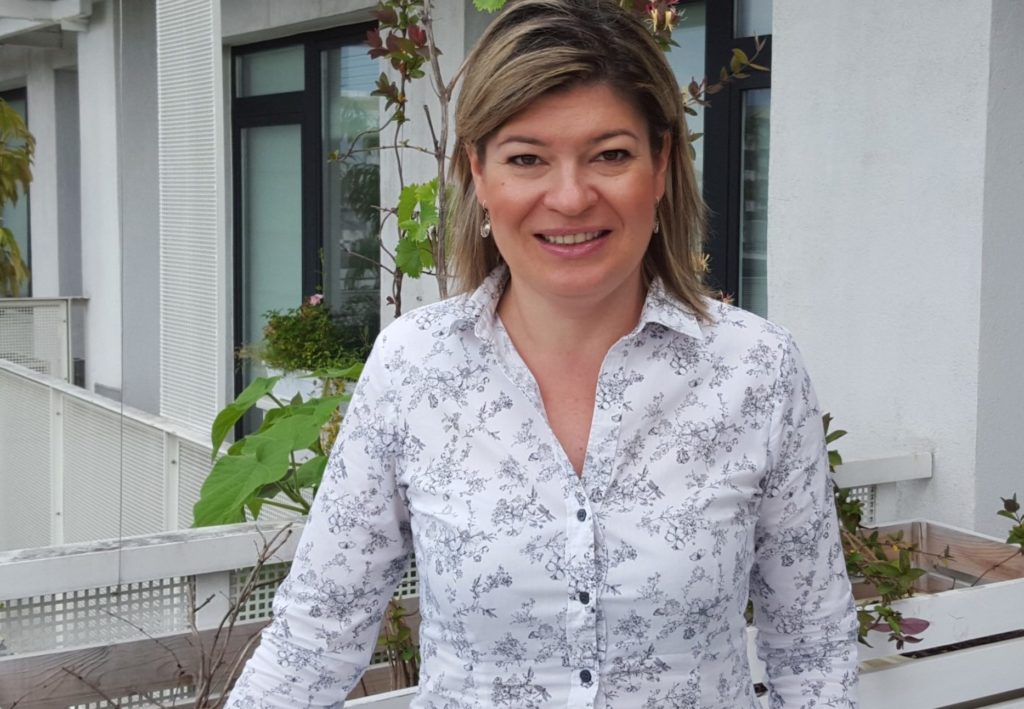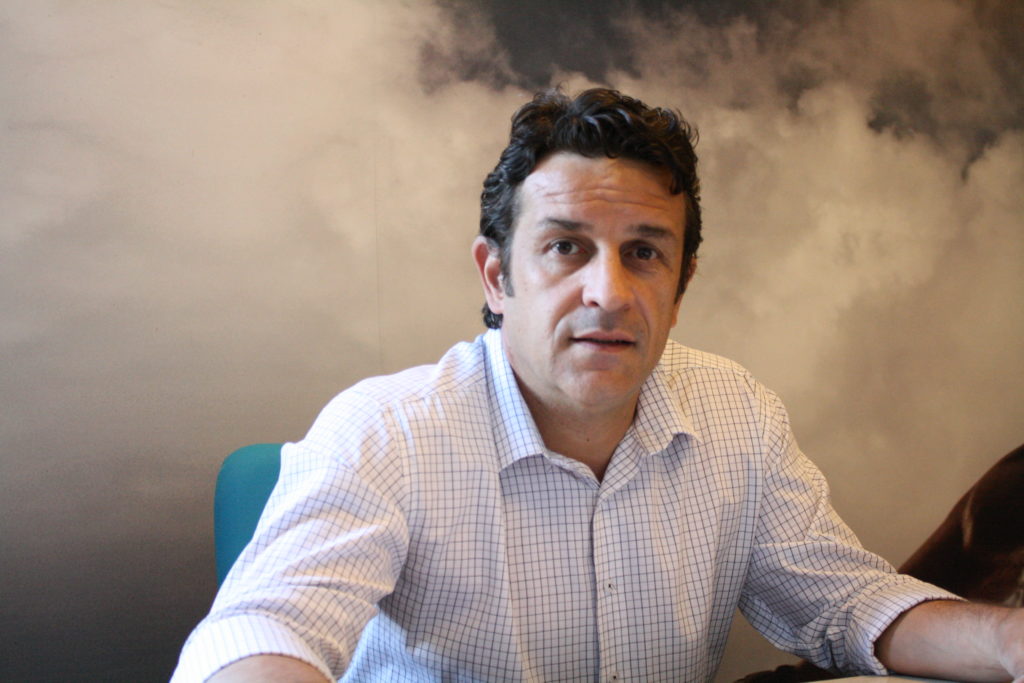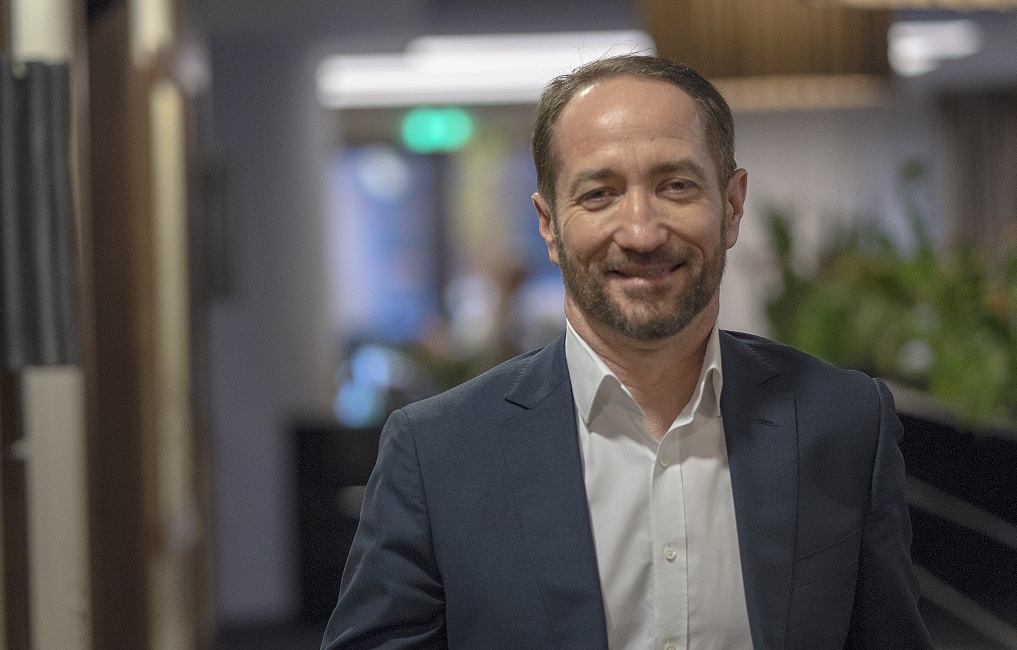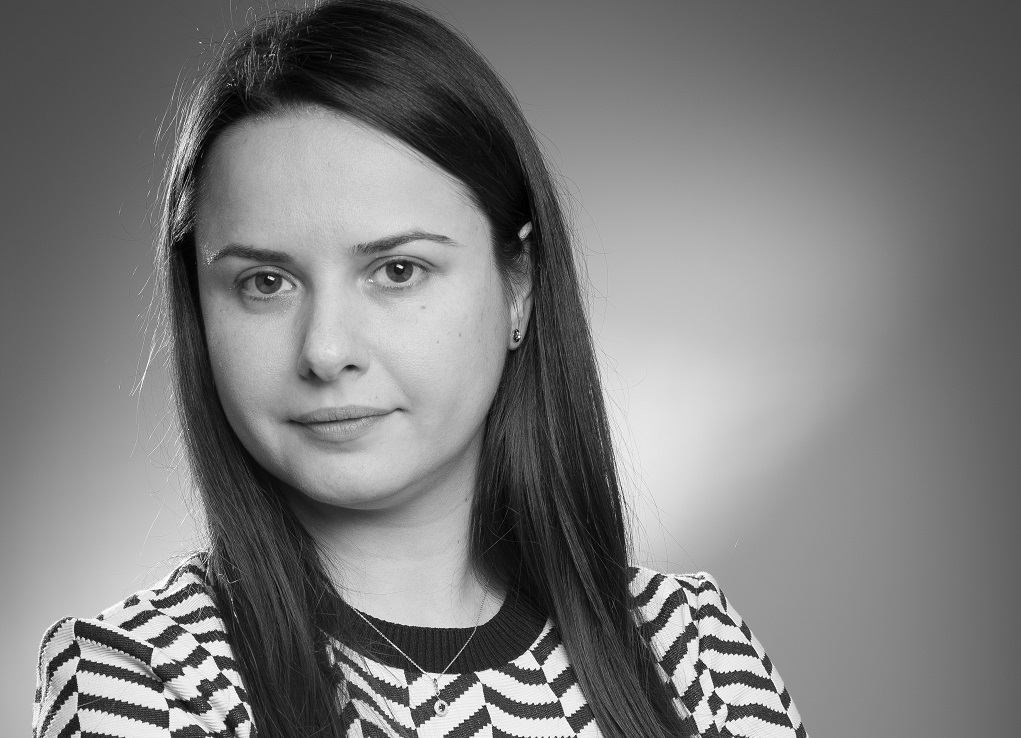:quality(80)/business-review.eu/wp-content/uploads/2018/06/digital-skills.jpg)
According to estimates made last year by media agency Initiative, the Romanian media market registered growth of 13 percent in 2017, taking it to EUR 412 million. The advance, detailed in the new Media Fact Book report, represents the biggest climb since the crisis and brings the local media market close to its 2008 level.
By Romanita Oprea
For 2018, Initiative estimated fresh growth of 10 percent compared to 2017, taking the market to EUR 455 million. “Per capita media consumption in Romania continues to be way under the global and European averages; therefore there are the premises for sustainable growth in advertising volumes in Romania in the coming years, provided the economic parameters that influence public consumption perform well. It is encouraging that both multinationals and local companies have started to invest more in new brands and product innovations. The growth is boosted also by the entrance of new clients and some new categories of investors on the local media market,” said Alexandra Olteanu, managing director, Initiative.

As in previous years, the evolution of the market is supported by an accelerated growth in TV, which will continue to dominate advertising budgets, with a share of 66 percent. In 2017, TV registered the biggest growth since 2009 – 14 percent compared to 2016, to reach EUR 273 million. The other channels – online, radio, OOH – also expanded, with the exception of print, which continued its moderate decline.
Online grew last year by 14 percent, to stand at EUR 73 million, with a market share of 18 percent. Google and Facebook continue to dominate the digital market, making up 66 percent, while the internet penetration rate grew by 3 percent in 2017.
For 2018, Initiative estimates TV growth of 10 percent (to EUR 300 million), digital expansion of 16 percent (to EUR 85 million), a 10 percent hike for radio (EUR 26 million) and a 5 percent rise in OOH (EUR 30.7 million), with print expected to drop another 5 percent.
“In 2018, the advertising market grew and almost reached the level of EUR 500 million. In 2019 it could exceed the peak level of 2008,” said Daniel Ene, COO at Omnicom Media Group Romania, a view echoed by by Dan Balotescu, managing partner at Media Investment.

Meanwhile, Claudia Chirilescu, owner of Spoon Media, outlined some changes in the media scene, although she believes it essentially remains the same. “Digital has increased a lot; many clients have put digital thinking in the center of their communication and business approach. This determined a change in the market; lots of agencies now have 360 digital competences. We have an average share of 15 percent media budgets in online and 66 percent of total media budgets were invested in television in 2018. We expect an investment of 63 percent in TV for 2019,” added Chirilescu.

According to Balotescu, the media industry has been predictable over the past year, which is a very good sign for media investment. Consequently, clients have been allocating more money and the media has become stronger every year. “For 2019 we predict the same trend. Clients will continue to invest in media and the competition will continue to be tough. At the same time, media prices will continue to rise and it will be a real challenge for all players to accommodate the high demand with the limited offer, while at the same time not escalating media costs. TV will remain the main media in Romania in 2019 with a share of approximately 60 percent. Since 2012 digital has become the second largest media and it will remain so. Digital’s share will continue to slightly grow, to 25 percent. The other media – radio, OOH, print and cinema – will share the remaining 15 percent of the market and they will continue to have a constant evolution,” concluded Balotescu.

Mihai Trandafir, managing director at UM Romania, doesn’t have such a rosy opinion of the market perspectives, though he affirms that it has grown steadily over the last three years, and by about 10 percent in 2018, reaching EUR 450 million. “But towards the end of the year the Consumer Confidence Index declined quite significantly as a result of the political debate, and the latest Ordinances have generated greater uncertainty for some of the industries with significant growth in 2018. In this uncertain legislative environment, predictions for 2019 are quite vague,” commented Trandafir.

At the same time, as Cosmin Cojocaru, managing director at Carat Romania, pointed out, the demand for media exposure is significantly higher than the supply, which means prices will inevitably go up. “Everybody understands that prices have to increase; however each of us would like this to happen to others, not to ourselves! From a business perspective, this is totally understandable: everybody wants to go to heaven, but nobody wants to die! Pressure on prices is huge. The average net TV price in Romania is now 35 times cheaper than in markets like Germany, for example. Thirty-five times! Of course, we are behind them in many ways, but I am pretty sure we are not 35 times behind. With all the inevitable increases in 2019, the low level of media prices will remain one of the biggest problems for all players in the industry: fewer resources to invest in quality content (for media owners), less visibility and quality exposure (for media clients), less capital to invest in talents, tools and services (for media agencies),” said the Carat representative.

His opinion about the growing consumption is shared by Loredana Baracu, managing director at Zenith Romania. She points to the fact that digital media is growing faster, as a consequence of extended device penetration and the constantly expanding internet connection. TV is no longer used just for regular viewing, but also for online streaming through on-demand services, like HBO GO and Netflix. “Digital & TV, making up 82 percent of adspend, will remain the main drivers of market growth. Digital, in a highly accelerated rate, will reach a higher share, exceeding 20 percent in 2019. Even though it remains the main media used in Romania, TV is in a slight decline, losing share year by year. Audiences will continue to decrease and, after three years of double-digit price increases, inflation will slow. By 2020, it will go under a 60 percent share of the total market,” predicted Baracu.
According to Manuela Vasiliu, deputy managing director United Media Services, the small drop in the TV consumption seen in the last years combined with a fast expansion on the digital, it makes digital being more and more diversified when it comes to touch points. “This change attracts also the nuancing of the approaches from a big part of the players that are communicating in digital. It is felt the need for more detailed and profound analyses on the users’ consumption habits, in order to find the most efficient selection that will help deliver the message towards the the right who,” explained Vasiliu.

A vibrant industry
With all this in mind, how do the specialists characterize the Romanian media buying & planning industry at this time? Ladies first. Claudia Chirilescu perceives it as a very price sensitive market that became this way due to 2008’s economic crisis and hasn’t changed since. “I could even add that this tendency has increased in the last few years. The strategic part of our job is not as important as it should be; if you get a lower price from a business partner, the strategic approach loses importance. This pressure on cost can be noticed at both agency and supplier level,” added the Spoon Media representative.
In her turn, Loredana Baracu sees it as a small, but agile market that is growing in size and complexity. She believes the industry is in an on-going transformation, looking for new competences, combining data and technology to create more sophisticated and efficient communication solutions and leading new ways in creativity.
“The digital technologies are adopted fast in our market as well, in all the media. Romania is one of the most advanced markets in the CEE in the media and advertising sector, a reality that can be easily observed at the specific industry festivals and the various awards received by the agencies and the companies. Also on the positive side I would mention the rise in transparency regarding the monitoring of all media and we are looking forward in seeing the first numbers on the outdoor and cinema market. At the same time, there is a constant players’ interest and involvement in keeping up with the latest tools and reporting sources (audiences, monitoring, etc), commented Manuela Vasiliu.
“A commoditized market is one in which clients display rampant skepticism, routinized behaviors, minimal expectations and a strong preference for swift and effortless transactions regardless of product differentiation. Commoditized clients choose mainly based on price because they have become convinced that the options available are equally acceptable and the minor differences among them are not worth investigating. They have lost the habit of asking: ‘Which of these suits me best?’” said Cosmin Cojocaru. “I have to say that this is mainly our fault, as media agencies. If we keep focusing so much on price and continue to present ourselves as the cheapest GRPs providers, then this is how we will be perceived.”
Meanwhile, Daniel Ene believes that in TV we face a trade crisis, as demand is higher than supply. “We all have to learn how to pass this situation and bring this industry on a normal track. On the planning side, the need to upgrade our capabilities is higher than ever as developed countries from Europe, already ahead of us, are advancing rapidly with planning techniques and capabilities. In terms of quality and efficiency, there has been a regression. The media space that we buy can’t be fully controlled and the impact of advertising has decreased year after year due to the clutter and lower quality of the advertising environment. We have to understand this, adapt and find better /clever solutions in our planning. When I say planning I mean both media and message,” said the Omnicom Media Group Romania representative.
Striking a more optimistic note is Dan Balotescu, who thinks that after almost 30 years of media activity in Romania, it can be considered a mature industry. “We’ve learned a lot from our clients and from other advanced media markets, so now we are able to give back to our partners valuable solutions and to continue to grow the Romanian market,” he said.
The next economic crisis – to be or not to be?
Hovering like a potential cloud over the entire market is the economic crisis predicted by some parts of the industry, but one that nobody actually knows if it will arrive or not. BR canvassed the specialists, asking if they believe the Romanian marcomm industry has learned anything from the deep crisis of 2008. According to Mihai Trandafir, the local media market faced one of the steepest declines in Europe during the first years of the recession, along with Greece and Bulgaria. “We reached 50 percent in 2013, while in other CEE countries volumes dropped a maximum of 25-35 percent compared to 2008. Unfortunately this major setback meant that we are still below the 2008 figures. Still, we found the strength and creativity to build our sophistication to an international level, awarded in all major global and European festivals, ahead of significantly bigger markets. Fortunately, growth in consumption does not necessarily mean the beginning of a recession. But we do notice a tenser economic environment at global level. In Romania, the political debate seems to distract the focus from strategic investments and initiatives, moving mostly towards last minute social measures,” said the UM representative.
Meanwhile, the Zenith representative believes that leaving a cyclical evolution, after five years of growth is expected to get closer to the inflection point. “Still, having so many opportunities, diversification, data, technology and sparkling minds, ways to continue to grow (but at a significant lower pace) might be discovered and the market can be further developed, making the crisis effect more manageable.”
And while Cosmin Cojocaru and Dan Ene are sure a crisis will come, arguing that this is what history has taught us (Ene) and that there is a cycle (Cojocaru), Claudia Chirilescu isn’t yet sure if the answer is yes or no. “If this happens it will be for different reasons than the last one. I think that many advertisers on the market have lost their relevance in the eyes of consumers, and the crisis could happen because those old-type client businesses will suffer and so their media budget will decrease.”
On her turn, the United Media Services representative believes that if the crisis will come it will not be as bad as it was the last time, because the population is not anymore in such a big debt, the chaos is not that big, not even in USA. “And there is also possible not to be a crisis, but a readjustment, as it’s natural to happen from time to time. At the same time, when you are used to 40 percent growth and you wish for 50, even the fact that you are a flat line and you don’t grow can be a “crisis”. I believe that the ones that have learned cannot forget what they’ve learned: first of all not to give into desperation, because it’s clear that you get back to being ok and also not to take desperate measures. We work in an industry where the people are the main resource and if you take desperate measures it will be really hard to get back and grow again. You must keep your team in a balance and, at the same time, make the people understand that if there aren’t results there cannot be bonuses, for example,” concluded Vasiliu.
And while Ene thinks that local advertisers have understood how to deal with it, Cojocaru believes that we learned that we are more connected to the world than we thought we were. “We learned that conditions can change swiftly and dramatically, and that we need strong foundations to resist. We learned that a good long-term strategy takes the edge off short-term anxieties. We also learned that price is not everything. “Unfortunately, we seem to have forgotten some of these lessons.”
“Products do not sell without advertising. The brand image and values built in time are not worth losing. It’s dangerous and not effective. Consumers quickly forget, or change their perceptions, which is dramatic for a brand. If a brand wishes to be part of a human’s life, it must be there, present, day by day,” said Daniel Ene.
In turn, the Zenith representative believes that the industry has radically evolved since then. “It’s more agile, more versatile, ready to adapt to new circumstances. The industry had to face numerous and various challenges: business transformation, digitalization, new consumer and media consumption evolution, new rules. Definitely a shift in the evolution trend, and a new crisis will find a more experienced and resourceful industry,” concluded Baracu.
What creativity means in media and for them:
Claudia Chirilescu: “Research, research and research. Having a creative media approach with creative assets developed for a specific objective. Evaluate, learn, validate everything with research.”
Cosmin Cojocaru: “The secret killer of creativity (not only in media) is Shame. It is there every time someone holds back on a new idea, fails to give their manager feedback and is afraid to speak up in front of a client. That deep fear we all have of being wrong and of being belittled – is what stops us taking the very risks required to move our companies forward.
If you want a culture of creativity and innovation, where people embrace sensible risks, you need managers to cultivate openness and methodical vulnerability in their teams. And this requires first that they are mindful of their own vulnerabilities. The notion that the leader needs to be “in charge” and to “know all the answers” is both dated and destructive. Its impact on others is the sense that they know less, and that they are less than. Shame becomes fear. Fear leads to risk aversion. Risk aversion kills creativity. For me, creativity in media means encouraging a certain type of leadership.”
Dan Balotescu: “The creativity in media is media itself. You cannot do media without creativity. The entire media process implies creativity: in the way you are judging the competition, in the way you are using the media channels, in the way you are planning the campaigns and most importantly, in the way you are amplifying the message of the campaign. Nevertheless, the evolution of the way we measure the efficiency of media is helping us be even more creative and efficient in using the various media channels. The measurement itself and the data analysis imply creativity.”
Daniel Ene: “The start for any thought, action or process!”
Loredana Baracu: “Is the ability to change the rules of the games, to gain access to a new level. Either is about negotiations approach, either is the way brand is addressing to consumer, either is the way media specialists open their minds to search new media perspectives and to innovate.”
Manuela Vasiliu: “Creative media is a familiar concept to United Media Services for a long while. For keeping up with consumer journey, nowadays, being creative and crossing the borders of the traditional approach is an everyday reality and it develops continuously from on brief to another. Rules are changing and we have to constantly develop and finetune a wider perspective, enclosing business strategy and tactics, content and media all together. Our entire way of thinking is focused on generating innovative solutions for our clients. Therefore, we specialized ourselves in delivering much more than tailored media approaches: big data processing, technology and AI development, consumer trends analysis, content generation and brand experience solutions, for more efficiently reaching the audience and bringing better results for our clients’ campaigns.”
Mihai Trandafir: “We already deal with blurring borders between ATL/ Digital, PR and sometimes BTL: personalized relevant content, digital at heart, is powering the storytelling, no matter the source. As such, the media specialist is evolving towards an architect of the story deployment, shaping in a dynamic way the form and function of the communication, and using data and science to make sense of it all. As such, we have launched UM Studios, a Creative arm of Universal McCann fueled with Creative, Digital & PR capabilities. Creativity needs to remain accountable and generate business results, and our latest development is the launch of our Reprise office, bringing top class performance capabilities in Romania.”



:quality(80)/business-review.eu/wp-content/uploads/2024/04/coffeeast-3.jpeg)




:quality(80)/business-review.eu/wp-content/uploads/2024/02/IMG_6951.jpg)

:quality(80)/business-review.eu/wp-content/uploads/2024/04/COVER-1.jpg)



:quality(80)/business-review.eu/wp-content/uploads/2024/04/cover-april.jpg)
:quality(50)/business-review.eu/wp-content/uploads/2024/04/Slide1.png)
:quality(50)/business-review.eu/wp-content/uploads/2024/04/1_Transport.jpg)
:quality(50)/business-review.eu/wp-content/uploads/2024/04/0x0-Supercharger_18-scaled.jpg)